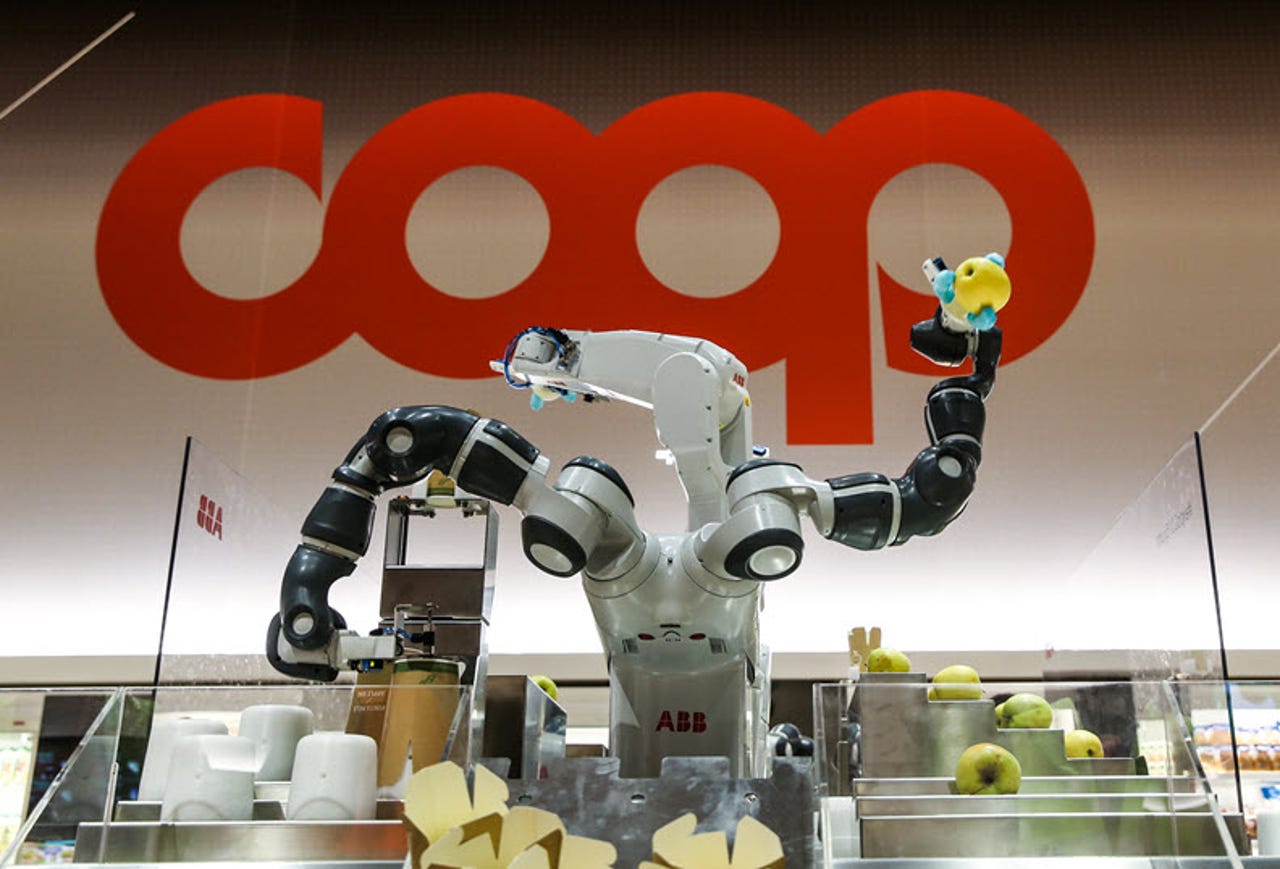Digital transformation: Supermarket of the future


Image courtesy Microsoft
Retail operations are changing dramatically, caught in the middle of evolving consumer expectations and an increasingly competitive retail environment. Brick and mortar stores, in particular, have had to adjust to a world of online competitors and low prices. Regardless of size, no retailer is immune.
I spoke with the Chief Information Officer of Italy's largest supermarket brand, COOP Italia, to assess the impact of digital transformation on this large company, which has annual revenue of almost $15 billion dollars.
During my conversation with COOP Italia's CIO, Gabriele Tubertini, he explained how consumers have changed in response to online shopping and information. A particularly interesting segment touched on how Coop Italia built a prototype of the supermarket of the future at the 2015 Milan Expo. As you will read below, it's a prototype that's moving closer to production.
This discussion represents episode 190 of the CXOTALK series of conversations with innovative leaders.
Here is a short section of episode 190, in which CIO Tubertini describes the supermarket of the future. Listen to our entire 45-minute discussion, and read the complete transcript at the CXOTALK site.
The edited transcript of this segment follows (Tubertini is a native Italian speaker):
In 2015 Milan hosted one of the most important events in the last decade for Italy. That was the Expo of 2015. The theme of the Expo was Feed the Planet, Energy for Life and the aim of the exhibition was to explain how our food habits are strictly tied up with sustainable global growth and how they must change to allow a more balanced distribution of the issues among the world corporation.
This topic is important because growth is targeted to reach 9 billion people in 2050, we don't have enough resources to feed them all. Even nowadays, a big percent of people are underfed, and the problem will only rise with climate change.
When Expo held the bid to select the official food distribution partner, given that we are the leader in the Italian market, and we are engaged in the arena of sustainability, we decided to participate in the bid and won.
And so we become the official food distribution partner for Expo. We were in charge of the construction and the operation of one of the expo pavilions, the Supermarket of the Future.
The concept of the supermarket of the future was involved with design by Carlo Ratti who is the director of the MIT Senseable City Lab. He's considered one of the most influential personalities in architecture and engineering. He's an Italian, but he works in the US and is a very famous person. We teamed up with him and his collaborators with our engineering company and on the IT side with Avanade and Accenture as our trusted technology partners.
The concept was based on two main pillars.
First, in the supermarket of the year 2050, which is the year that we were trying to forecast, the technology will have to fit in smaller spaces. If you think that traditional markets are designed for maximum efficiency, we wanted to display as much as we can in the smallest space possible and for the customer that wanted to find all the needs in the shortest time and go back home to have his dinner. Therefore, today, the shelves are tall, and the aisles are narrow, so socializing inside the supermarket is limited.
But, we think that the technology will allow you to stock products very close to where they have to be replenished. So, the number of products on display on the shelf can be reduced, and you can reopen the space for visitors; the supermarket will become like the squares in the Middle Ages or the galleries of the 19th century.
The second pillar was the idea that every product has an accurate and precise story to tell. And so we set up a very technology-oriented solution; just simply indicating the product on the table with a finger, with a suspended screen on top of the table, showed all the information related to the products, describing exactly the origins of the materials, the health impact, the environmental impact of the products.
We were just trying to meet the expectations I described before; informed customers want more information, which we must provide in the easiest way. I think there is nothing easier than moving your finger towards a product and obtain all the information you need.
We worked with Avanade using Microsoft technology, to perform the triggering of the finger indication. We used the motion sensing device, the normal Kinect that many people in the audience have at their home for gaming. So we had something like 250 Kinects in 1500 square meters.
One of our main concerns before opening the pavilion was can you have so many Kinects working in such a limited space. When we asked this question to a Microsoft expert or an Avanade expert, they did not know. We asked, "Do you think there will be a problem in testing 250 Kinects in the same area?" The challenge seemed really, really tough but we won the prize for the best use of technology
Together with Avanade, Accenture, and Microsoft, by the end of the year, we plan to open a brand new store in Milan built on a very similar concept of the one at the expo. The store will act as a permanent laboratory that we will use to introduce new concepts.
CXOTALK brings together business leaders shaping our world for in-depth and personal conversation. Please watch the entire episode and read the complete transcript. Thank you to Avanadefor sponsoring this episode.